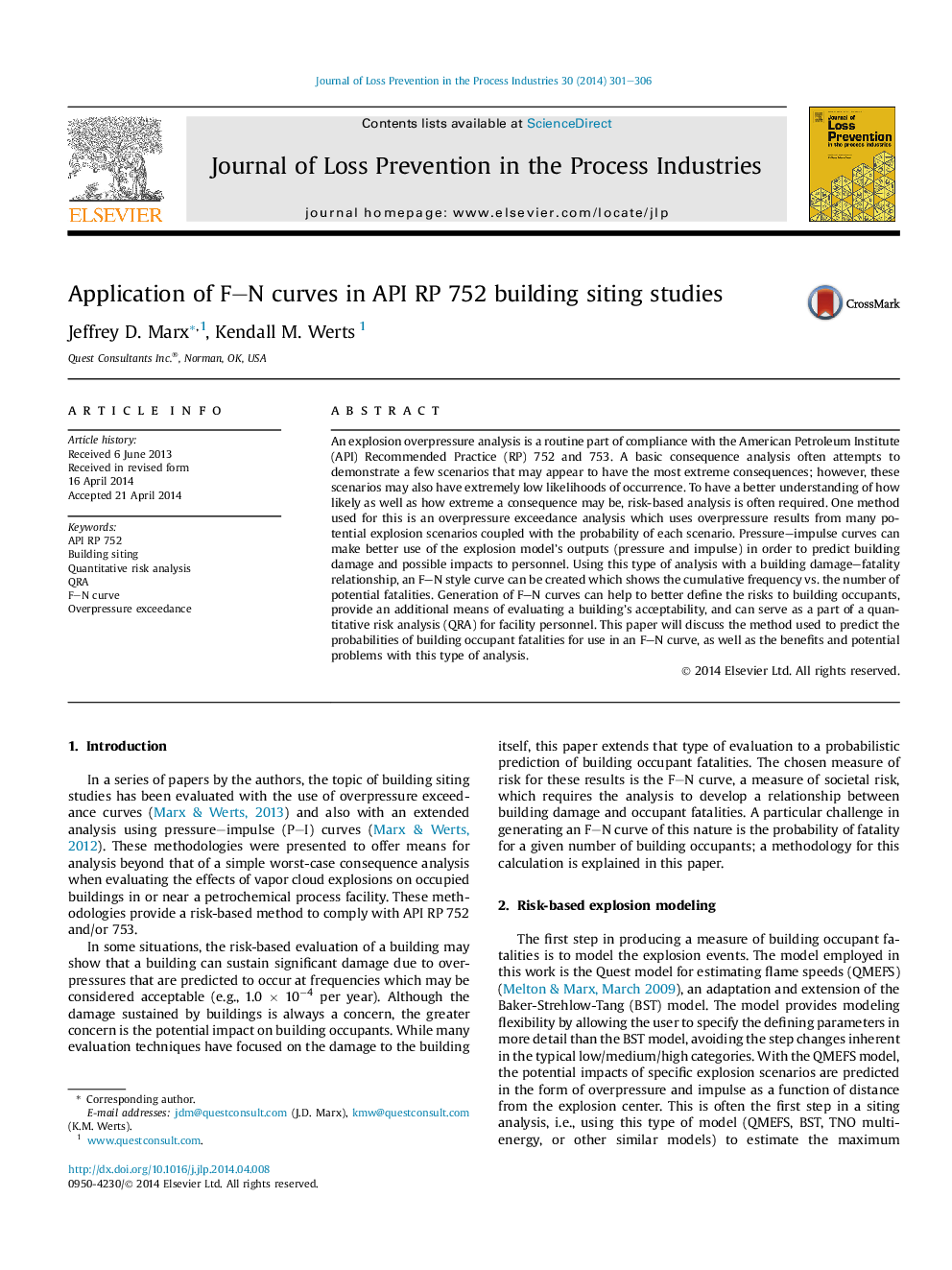| Article ID | Journal | Published Year | Pages | File Type |
|---|---|---|---|---|
| 586205 | Journal of Loss Prevention in the Process Industries | 2014 | 6 Pages |
•Quantitative risk-based method is applied for occupied building siting evaluations.•Primary focus is impacts of vapor cloud explosions.•Pressure–impulse curves are used to predict building damage from explosion events.•Building damage vs. occupant fatality relationships are applied to generate F–N curves.•Result is a risk-based measure of building occupant fatalities due to explosions.
An explosion overpressure analysis is a routine part of compliance with the American Petroleum Institute (API) Recommended Practice (RP) 752 and 753. A basic consequence analysis often attempts to demonstrate a few scenarios that may appear to have the most extreme consequences; however, these scenarios may also have extremely low likelihoods of occurrence. To have a better understanding of how likely as well as how extreme a consequence may be, risk-based analysis is often required. One method used for this is an overpressure exceedance analysis which uses overpressure results from many potential explosion scenarios coupled with the probability of each scenario. Pressure–impulse curves can make better use of the explosion model's outputs (pressure and impulse) in order to predict building damage and possible impacts to personnel. Using this type of analysis with a building damage–fatality relationship, an F–N style curve can be created which shows the cumulative frequency vs. the number of potential fatalities. Generation of F–N curves can help to better define the risks to building occupants, provide an additional means of evaluating a building's acceptability, and can serve as a part of a quantitative risk analysis (QRA) for facility personnel. This paper will discuss the method used to predict the probabilities of building occupant fatalities for use in an F–N curve, as well as the benefits and potential problems with this type of analysis.
